前本彰子 MAEMOTO Shoko
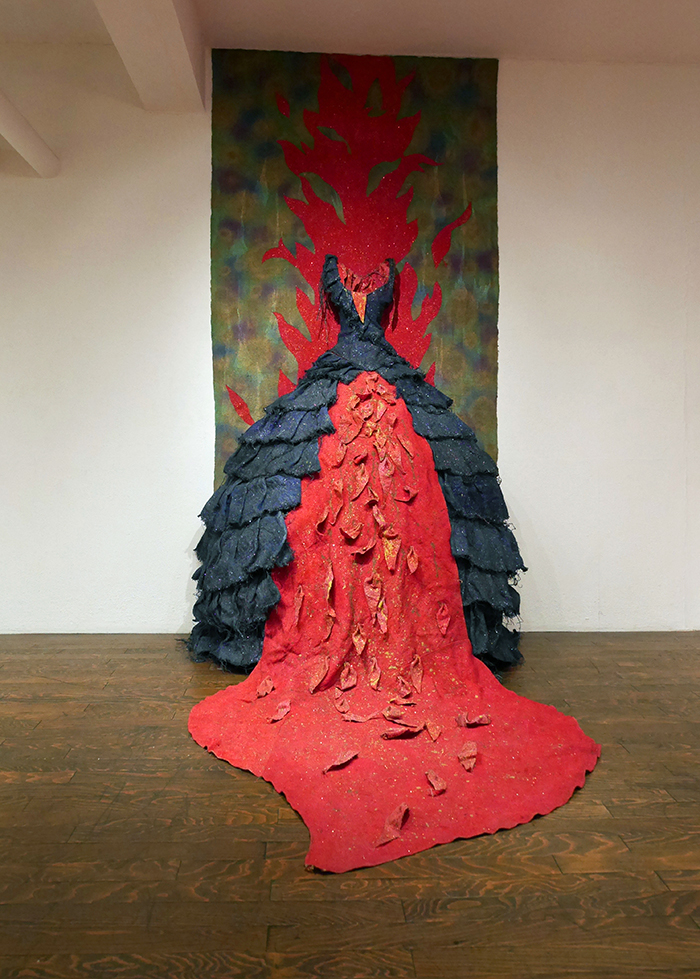 《Silent explosion ー夜走る異国の径》 1988年 ドンゴロス布、アクリル絵具、石膏、ラメ 303×203×280cm 愛知県美術館蔵
《Silent explosion ー夜走る異国の径》 1988年 ドンゴロス布、アクリル絵具、石膏、ラメ 303×203×280cm 愛知県美術館蔵
Silent Explosion: Running Through the Night on Foreign Streets, 1988, Acrylic, Plaster, lame powder on Dongolos cloth 303×203×280㎝ Collection of Aichi Prefectural Museum of Art
前本彰子
MAEMOTO Shoko
1957年 石川県白山市(旧松任市)生まれ。東京、千葉県に在住、活動。
空洞のドレスから、女神降臨へ ―前本彰子展「紅蓮大紅蓮」を見て
小勝禮子(近現代美術史、美術批評)
……もう1点の《悲しみの繭》は、軍部が政権を掌握したミャンマーで民主化を求めて街頭デモをする市民が次々に犠牲になるという痛ましい事件を直接のきっかけに発想されたという。青い顔の面(人と猫の合体した顔)は、目を見開いたまま紅い涙を顔中に吹き飛ばし、口から犠牲になった人の数だけの赤い蝶を吐き出す。しかし制作中に犠牲者の数が増えすぎて、とても蝶を作り切れなくなったという。この猫人の面は耳と顎を金属の鎧で覆われて、白い蝶のかたちのフェイク・ファーを背景とし、最初に犠牲になった女性が生きていれば着たかもしれない花嫁の白いヴェールを床まで垂らしている。これもまた前本の創ったある種の神の姿であろう。民主化に生命を捧げた人々への思いを顕現する姿とも言えよう。前本は結局、展示しきれなかった蝶とヴェールの切れ端を、来観者全員にお守りとして配った。ミャンマーの犠牲者市民への思いを来観者と共有することになる。この行為まで含めて、前本の《悲しみの繭》という作品と言えるだろう。
(中略)
前本彰子のアートは、日本では珍しく社会的テーマを扱っているとした1992年のコプロスの批評が、この新作にも当てはまるのが実感される。現在に生きている前本は、ことさらに社会・政治的な事件をそのまま表現するタイプの作家ではないが、かつて東野芳明や篠原資明が「超少女」作家を概括したような、自分が生きる世界全体から逃避し、自分の周囲の日常だけに自閉する作家ではないのだ。「誰か他人のために」「心を込めて」つくると言い切った26歳のアーティスト、前本の信念は、その後の人生と少しの中断を経てもなお生きていたと言えるだろう。……
レビューとレポート(みそにこみおでん)https://note.com/misonikomi_oden/n/nebe6020dc18c
2021年8月28日より一部抜粋
Born in Hakusan city(former Matsuto city), Ishikawa, Japan in 1957. Lives and works in Tokyo and Chiba.
Maemoto Shoko: From the Empty Dress, To the Advent of Goddess: Review of her solo show, “Growing Blazing Flame, Like a Crimson Lotus”
KOKATSU Reiko, Art Historian and Art Critic
The immediate motive behind the other work, The Cocoon of Sadness, derived from a tragic incident that occurred in Myanmar, where the military seized power in the country. In that takeover, the citizens who held street demonstrations demanding democracy became victims one after the other. In this work, the entire blue face of a combined cat/human figure with its eyes wide open is strewn with red teardrops. And spitting out from its mouth are red butterflies representing the number of people who became victims. Maemoto, however, explained that in the process of creating this work, the number of victims grew too large for her to create the same number of butterflies. Each of the ears and the chin of the cat/human’s face has a protective metal covering, with a backdrop in the form of a white butterfly made from fake fur. It wears a bride’s white veil that falls to the floor, which might have been worn by the woman if she had not become the first victim. This is another form of a god figure created by Maemoto. It can also be seen as the manifestation of the feelings of the people who devoted their lives to democratization. She handed out her remaining butterflies and fragments of the veil (those that she was unable to exhibit) to every visitor as a lucky charm. This allowed her to share her feelings toward the Myanmar citizen-victims with the visitors. This action should be seen as complementing the work The Cocoon of Sadness.
(………)
Koplos’ 1992 comment, which referred to Maemoto’s art as the rare case of Japanese art directly adopting social themes, is certainly applicable to this new work as well. Maemoto lives in the present—she is not the type of artist who straightforwardly expresses social/political incidents in her art. Nor is she the type of artist who escapes the entire world in which she resides and withdraws into only the routine world around her, which was how Tōno and Shinohara had generalized the “Super Girl” artists. As a twenty-six-year-old artist, Maemoto had declared that works are created “for someone other than herself” and “from the bottom of her heart.” True to her words, Maemoto’s conviction has remained unchanged from that time, even after a short period when she suspended her artistic activity.
Translated by NANPEI Taeko
Excerpt from the website Review and Report by Misonikomioden(only in Japanese)
https://note.com/misonikomi_oden/n/nebe6020dc18c, August 28, 2021
更新された最新の情報は、画廊のウェブサイトやSNSをご覧ください。
Please refer to the following gallery’s website and social media pages for new updates.
http://www.gallerykobayashi.jp/artists/maemoto/
https://www.facebook.com/shoko.maemoto.9
https://www.instagram.com/strawberry_supersonic/?hl=ja
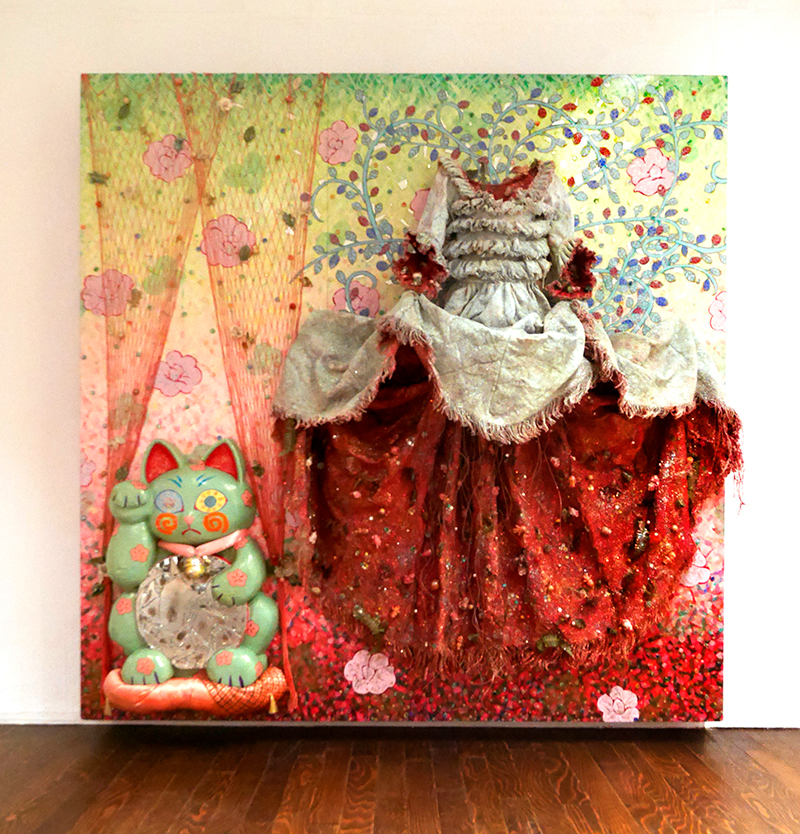
《BLOODY BRIDE II》 1984 ドンゴロス布、アクリル絵具、石膏、ラメ 228×228×45cm 高橋コレクション所蔵
BLOODY BRIDE II , 1984, Acrylic, plaster, lame powder on Dongolos cloth 228×228×45㎝ Takahashi collection

《宝珠物語》 1985年 板、アクリル絵具 162×390×6.5cm 個人蔵
The Story of Houju(Gem), 1985, Acrylic on Panel, 162×390×6.5cm Private Collection
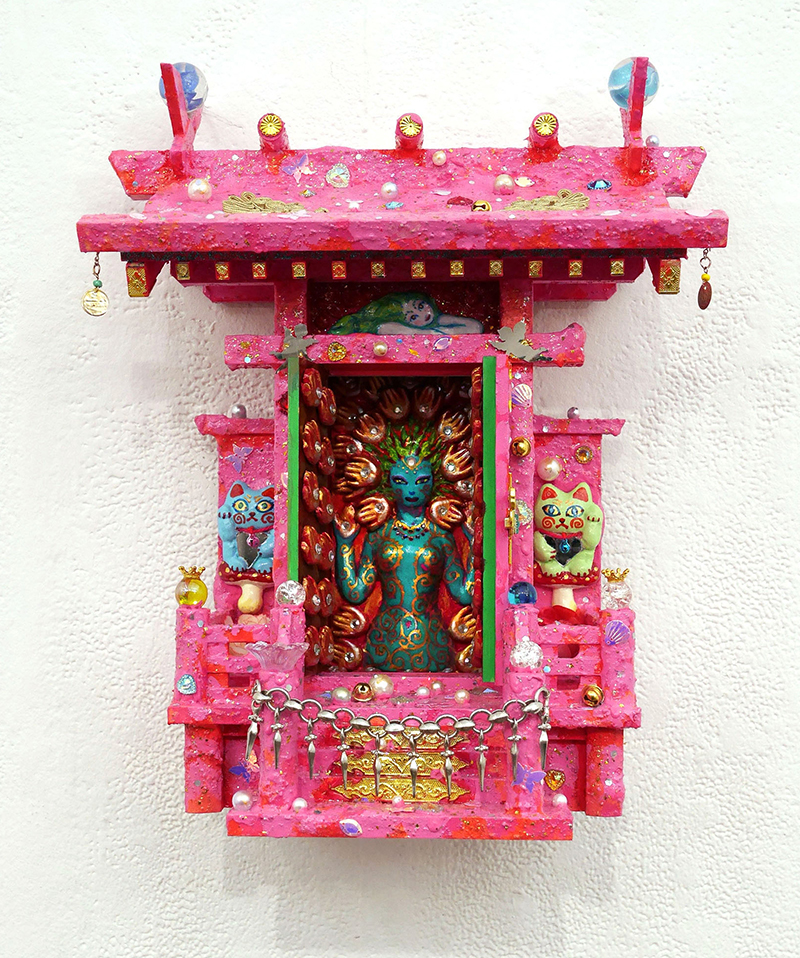
《全部欲しい千手観音》、〈宝珠神棚シリーズ〉より 2020年 ミクストメディア 43.0×34.5×19.0cm 個人蔵
The Kannon with a thousand hands who wants everything, from the series of Household Shinto Altar with Gems, 2020, Mixed media, 43.0×34.5×19.0cm, Private Collection
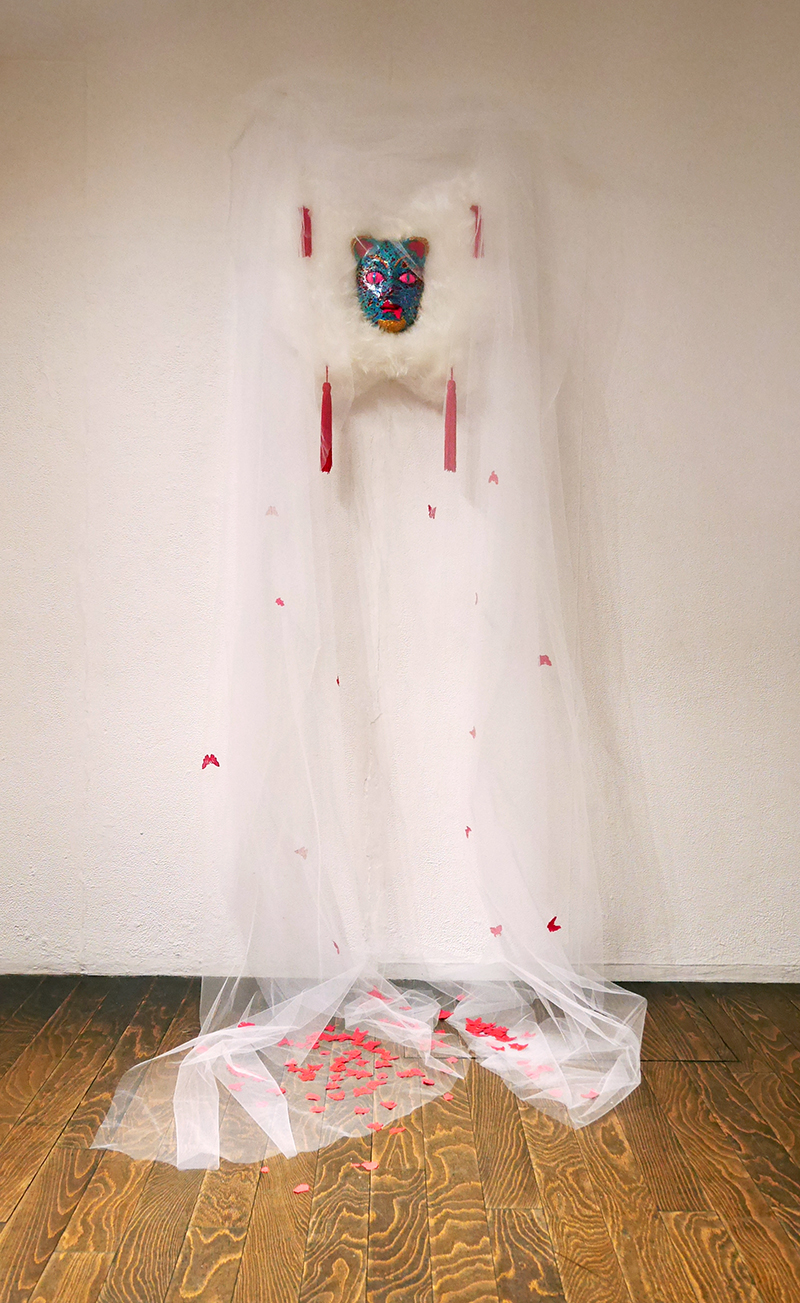
《悲しみの繭》 2021 ミクストメディア 210×70×70cm
The Cocoon of Sadness, 2021 Mixed media 210×70×70㎝
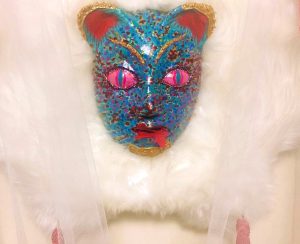
《悲しみの繭》(部分) 2021
The Cocoon of Sadness(Detail), 2021

《犠牲者はいつも正気》 2022年 ミクストメディア 41×50×12cm
Victims Are Always Sane, 2022, Mixed media, 41×50×12cm
写真提供:コバヤシ画廊
Photo Courtesy: Kobayashi Gallery

